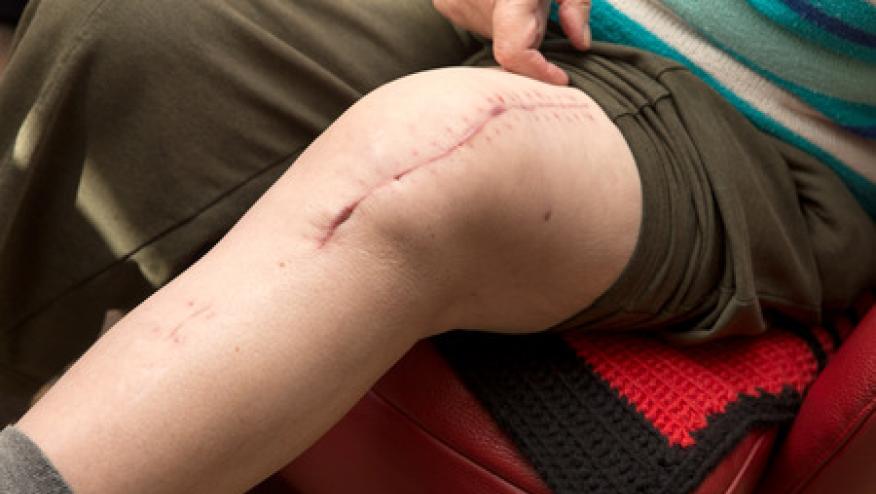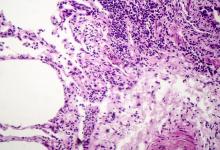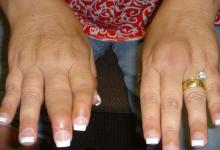Partial vs Total Knee Replacement: Is One Superior? Save

Key Takeaways
- Whether partial versus total arthroplasty is the best for patients with unicompartmental osteoarthritis (OA) of the knee has long been debated.
- The so-called TOPKAT trial randomized patients to the two procedures, with 5-year results published in 2019 showing little difference in outcomes.
- Now with 10 years of follow-up, outcomes remained largely similar, although total costs were somewhat lower and quality of life slightly improved with partial knee replacement.
Patients with osteoarthritis (OA) primarily affecting only one knee joint compartment did just as well with partial knee replacement (PKR) as with total arthroplasty after 10 years in a randomized trial -- and maybe a little bit better.
Final results of the landmark TOPKAT study indicated that rates of the most clinically important outcomes were nearly equal between the two procedures, according to David Beard, DPhil, GDPhys, MCSP, MSc, of the University of Oxford in England, and colleagues. These similarities included Oxford Knee Score (OKS) values both at year 10 and cumulatively during the entire follow-up period, as well as reoperations and revisions.
But partial arthroplasty came in just ahead of total knee replacement (TKR) in three categories: complications, overall health status in terms of quality-adjusted life-years, and aggregate costs, the researchers reported in Lancet Rheumatology. The advantages for partial replacement were modest: complication rates of 22% versus 27% (P=0.10), an average gain of about 4 quality-adjusted life-months (0.322 QALYs, 95% CI -0.069 to 0.712), and mean costs lowered by some $950 (£731, 95% CI 110-1,352), or less than $100 per year.
Google Ads HomePage Bottom Right Rectangle 300x250
"This 10-year randomised controlled trial ... provides the strongest, most robust evidence yet about the relative merits of TKR and PKR," Beard and colleagues wrote. "There were no significant differences between implants in clinical outcomes, reoperations, or revisions. However, the lower complication rate and the dominant health economic findings support continued recommendation for PKR."
In about half of patients with knee OA, the disease is confined to one compartment, and therefore those patients would be eligible for partial arthroplasty in which only the damaged segment is replaced. But whether it's clinically the best approach is still debated, Beard's group observed. Although PKR is simpler and less prone to complications, long-term revision rates have been higher. On the other hand, the researchers noted, "revisions of PKR tend to be relatively straightforward conversions to primary TKR, whereas revision TKR tends to be more complex, often with worse outcomes. As a result, the threshold for revising can be lower for a PKR than a TKR, which might contribute to the higher revision rate for PKR."
To settle the question, TOPKAT was conceived 15 years ago to compare the two approaches prospectively with random assignments. Beard and colleagues assigned 528 patients in British hospitals in equal numbers to receive partial or total knee arthroplasty. Blinding was considered impractical. OKS values at year 10 were set as the primary outcome measure. Mean age at enrollment was about 65, and just under 60% of participants were men.
Each arm was to have 264 patients, but some patients got the opposite procedure from the one assigned and others never underwent surgery, such that PKR was actually performed on 245, while 270 received TKR.
Results after 5 years were published in 2019, at which point OKS scores were slightly and nonsignificantly better with PKR. As in the new analysis, those interim findings also showed a gain in QALYs and a reduction in cumulative costs.
Now with the study completed, not much changed during the final 5 years for TOPKAT patients. In fact, OKS scores in both groups hardly budged from those attained only months into the trial; values in both groups had quickly doubled from a baseline mean of 19 (on a scale of 0-48). Average values of 37-38 seen at year 1 were maintained all the way through to year 10, Beard and colleagues reported, indicating that both treatments were clinically effective. Other efficacy measures such as EuroQoL and High Arthroplasty Activity scores also showed little difference between approaches.
Just 13 patients (5%) in each as-assigned group underwent revision during follow-up, and rates of all reoperations (including revision) were also identical at 9% in each as-treated group.
The higher complication rate with total replacement may be the most telling finding in the new analysis. These events were recorded for 53 of 245 patients undergoing PKR versus 74 among those receiving total replacement (RR 0.78, 95% CI 0.58-1.04). An intention-to-treat analysis, with 263 patients assigned to PKR and 252 to TKR, did yield a significant reduction in complications with partial replacement (RR 0.73, 95% CI 0.56-0.94).
Intraoperative complications were rare, affecting fewer than 1% of patients in both groups, and the between-group differences therefore involved those complications occurring afterward. In the total replacement group, 7% of complications occurred while patients were still hospitalized; later on, 13% developed complications requiring readmission, in most cases for reoperation. Most second surgeries were to address persistent stiffness or pain.
Combining the data on costs and QALYs, Beard and colleagues concluded that partial replacement was clearly the most cost-effective; they estimated a 97% probability of meeting a threshold of £20,000 ($26,200) per QALY gained with PKR.
Limitations to the study were dominated by the study's considerable attrition, though not unexpected in a 10-year trial involving older people; roughly 100 participants in each group were lost at last follow-up. Also, surgeons in the study were considered expert in the procedures they performed, which might not be the case in routine care. Beard and colleagues noted, too, that "younger high demand patients, who tend to do particularly well following PKR, might not have been recruited to the study," and that it had exclusion criteria that may not be observed in real-world practice. Finally, newer implants now on the market may perform better than those employed in TOPKAT, and cementless fixation is currently used more widely than when the study began.









If you are a health practitioner, you may Login/Register to comment.
Due to the nature of these comment forums, only health practitioners are allowed to comment at this time.